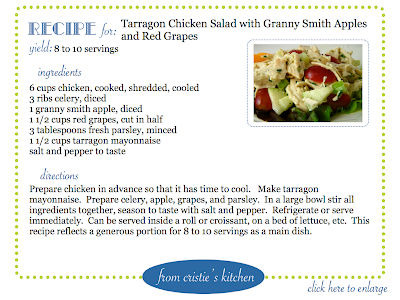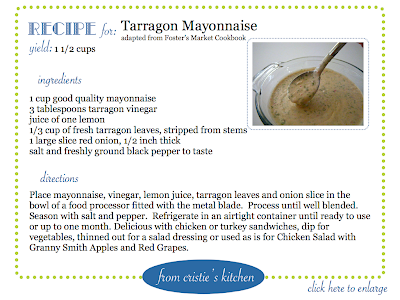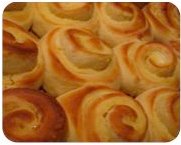 This summer I started a project that will be completed this weekend. My family will be giving out bottles of tarragon vinegar as neighbor gifts, a small reminder of this beautiful Christmas season and how much we appreciate their friendship.
This summer I started a project that will be completed this weekend. My family will be giving out bottles of tarragon vinegar as neighbor gifts, a small reminder of this beautiful Christmas season and how much we appreciate their friendship.
The vinegar wasn’t difficult to make, I quite enjoyed the process of harvesting the fragrant herb from a generous neighbor with a terrific green thumb. After stewing the vinegar with fresh herbs of tarragon, chives and a bit of oregano the liquid steppes for two to three weeks in a cool dark place. Put it into bottles, add a fresh sprig of tarragon, seal jars with wax and add a label. The result is simply delightful.
One of my favorite ways to use tarragon vinegar is in a chicken salad with a tart apple and grapes. The recipe comes from The Foster Market Cookbook that was pointed out to me by a dear friend. It has just the right mix of flavors and is worth the effort it takes to make the tarragon mayonnaise. I’ve eaten a similar salad at a local eatery, Pinon for years- maybe you have a favorite cafe' that has a similar salad?


Wishing each of you a memorable, meaningful holiday that’s filled with delicious things to eat and time to enjoy them with your loved ones.





















